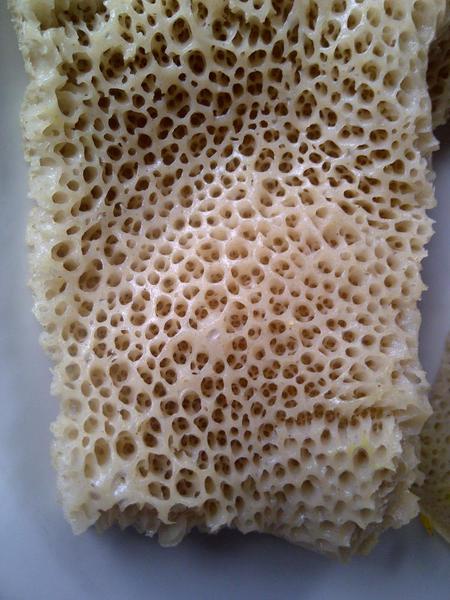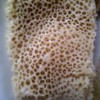The food is quite unique and tends to be inexpensive. Something I noticed immediately, especially as a vegetarian, is the large number of Italian food selections on most menus. Mind you, I am given English printed menus, so who knows what is available if you are looking at a Amharic menu. I was curious as to why Ethiopian restaurants were serving such a large proportion of Italian styled cuisine. Well, Ethiopia used to be called "Italian East Africa" back in 1936–1941, during the time of Italian occupation, an expansion of colonial-type powers in this area. Even though that occupation was short lived, the influence on the food has remained to this day.
(Coca-cola)
I didn’t try too many of the dishes. I learned the hard way with the first pizza I ordered that “meat” has many meanings. I ordered a “cheese only” pizza, which was stated to have “mozzarella olives herbs.” I asked if there was meat, fish, chicken, shrimp, or anything like that in it – and was assured it did not have any of these products. Upon delivery, I was shocked to discover slices of a pale pink meat covering the top. What was written in English as “mozzarella” was in fact a mistranslation of the word “Mortadella”, which is one of the most famous of cured pork sausages in Italy! When I asked why they had told me there was no meat in the pizza, she smiled and said “Ham is not meat, it is pork.” Aaaaargh!
(injera)
At my first breakfast, which was a 5:30 am the day I arrived, I thought I would just stick to something I knew so picked up a slice of bread, scrambled eggs and a napkin from the buffet table. After sitting down, I unrolled the napkin to discover it was actually soft, spongy and looking a bit like a lightly used dish towel! As I turned it over, I noticed a million small holes or bubbles. The waiter had just arrived to take my drink order and could obviously tell I was a bit befuddled by the strange towel. He smiled broadly and said, “Injera for eating.”
I had no idea what “injera” meant, but gathered this was no ordinary napkin, and was in fact edible. I have thoroughly enjoyed rice paper, which the first time I received, pain-stakingly removed from the nougat! I was not going to make that mistake again. So, I tore off the corner and using my fingers, basically picked up the scrambled eggs and popped both into my mouth. It was a very unusual sour and savory flavor combination, with a unique texture: the spongy material sort of caught the scrambled egg, filling in the nooks and crannies! I was not immediately sold on the flavor, but by the end of the roll (as I stated, it looked like a rolled napkin), I felt it was quite worthy.
(injera with spices and beef -- a friend's dish)
In brief, Injera is a sourdough-risen bread with a spongy texture that is a national dish in Ethiopia and served with just about anything and everything. It is made out of tef, an exceedingly small (< 1 mm size seed) seed in the cereal family, with barley, millet or rye close relatives. Tef can only be grown well at high altitudes (> 1,800 meters), with good rainfall and mild temperatures. All of these things come together perfectly at the altitude and sub-tropical highland climate of Addis Ababa! Therefore, the best quality injera in the world is found right here! The tef flour is mixed with water and fermented for several days, creating a sourdough-type starter – and hence the slightly sour taste. This “dough” is basically the consistency of pancake mix, which allows it to be poured onto a baking stone to look identical to a large crepe or flat pancake. There are very special clay plates that are used to cook it over a fire, which creates a flat side (closest to the heat) compared to the bubbly, spongy or porous appearance of the opposite side.
The more pale and smooth (free of husks) the injera the better, although there are three varities: white, red or black. The colors do relate to the quality, but also to other spices which may have been added into the mix. The porous nature of the injera is perfect for picking up sauces, stews or other products, as they adhere to it. As you may know, all food is eaten by hand without utensils in Ethiopia. Therefore, the injera is used as a small blanket that shrouds the food you are interested in, and then you enclose it, keeping all juices, sauces and food matter within the envelope you have created. It does not break down like bread and obviously is quite superior to rice or potatoes that have no structure at all. As a vegetarian, tef is very high in protein, dietary fiber, iron and calcium!
(injera firfir)
Within short order, I was ordering injera firfir for lunch: this is composed of a large piece of injera, which creates a bowl into which small, tightly rolled additional pieces of torn injera have been soaked in butter, sautÉed onions, other vegetables and then lightly seasoned with a red powder that contains a blend of spices! It is exceedingly filling but not highly caloric! Alas, only one state in the US grows tef and it is not of a good quality!
(fish, speared and dunked into boiling oil)
(roasted and spicy barley with peanuts)
(water: note the label, "bacteriologically potable")
- Dr. Thompson's Ethiopia series continues next week, with 5) The Rift Valley
- For part 1, Getting to Addis, click here
- For part 2, Languages and people, click here
- For part 3, Time and date, click here



Comments (3)